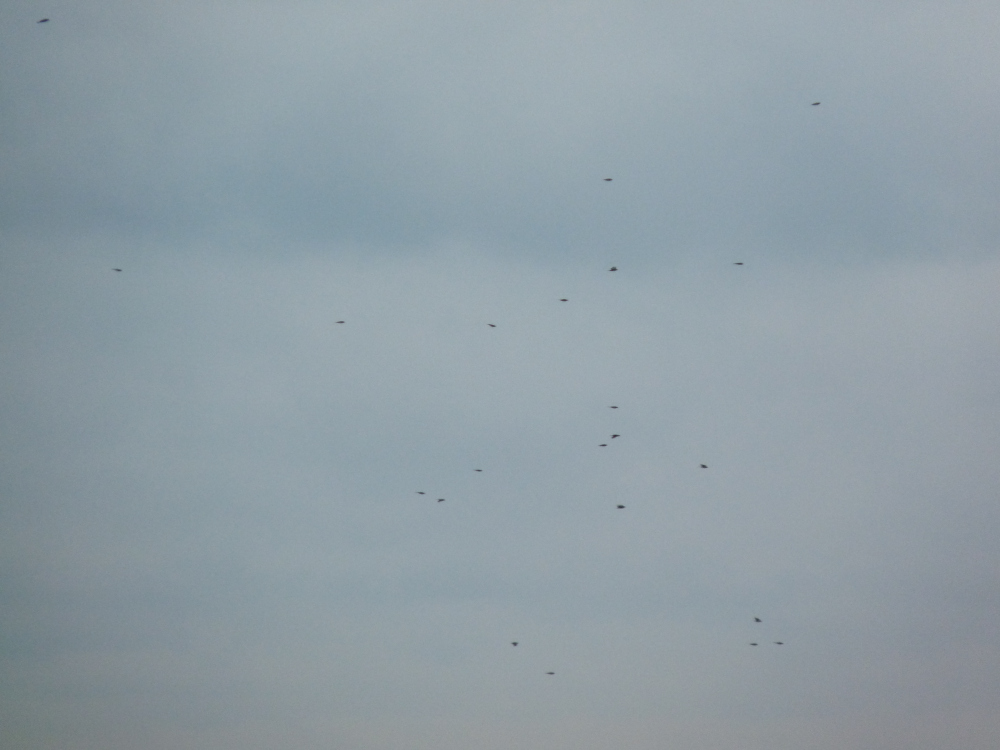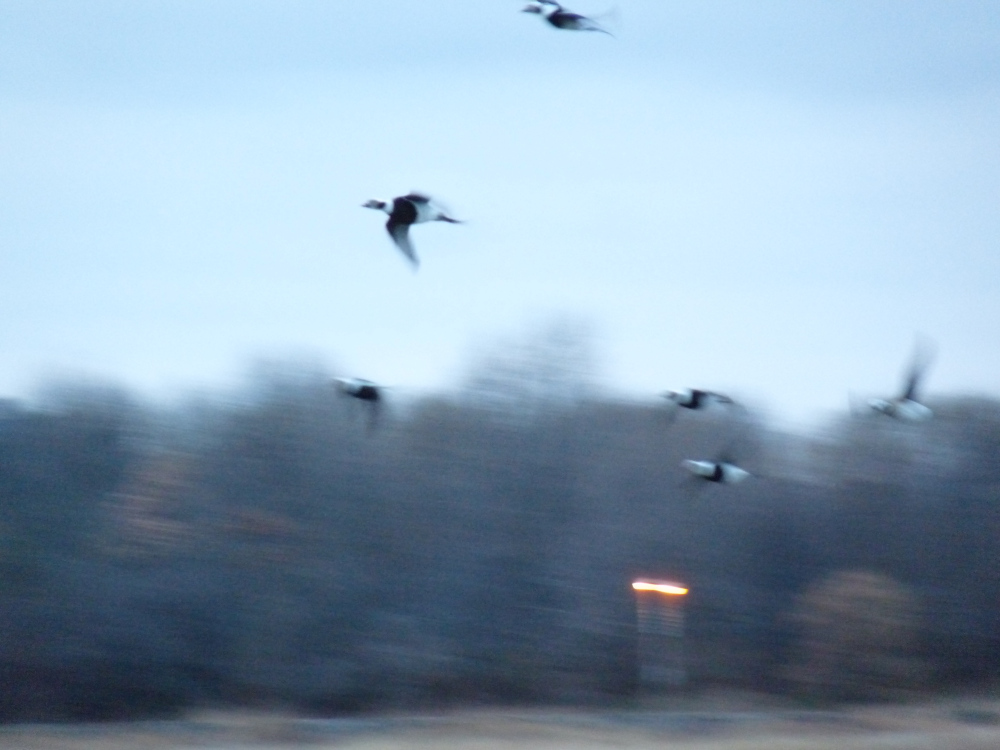We’ve had a good fall and early winter for both Long-eared and Short-eared Owls at Montrose. Multiple birds have been recorded during this period, though Short-eareds were and usually are more numerous. This Long-eared Owl looked comfortable roosting in a stand of cedars. It’s hard to say if this individual is a recent migrant or an overwintering bird that’s been around for a few weeks. December 22, 2022.
Category Archives: Winter Bird Reports
Lapland Longspur Movement, December 15, 2022
A large movement of Lapland Longspurs took place at Montrose on the morning of December 15. Multiple flocks totaling about 150 birds and ranging in size from a handful to 60 made their way south over the Point and Lake Michigan. Some were far offshore and just a few feet above the water. This isn’t unusual in late fall and early winter, but the numbers are. Interestingly, these birds were flying into a strong southwest wind, which seems counterintuitive, especially considering how small longspurs are. Flocks of Lapland Longspurs are fairly easy to recognize – loose groups of sparrow-like birds with a noticeable bouncy flight.
Does migration ever really end? It’s down to a trickle at Montrose, but as of mid December we’re still seeing birds that can justifiably be called migrants, like these Lapland Longspurs. The only time migration isn’t easy to detect, at least here in Chicago, is the period from mid January to early February.
Fun With Long-tailed Ducks, December 8, 2022
On December 8 a group of six Long-tailed Ducks put on an air show worthy of the Blue Angels. The birds flew in a big circle low over the fishing pier, beach, and against the Chicago skyline. Most were strikingly plumaged adult males. Seeing this many Long-tailed Ducks so close to shore is unusual. More photos are at my eBird checklist for the morning, URL below.
eBird Checklist
December 8, 2022
Pale Male
This is Pale Male (yes, I gave him that name), a domesticated male Mallard that’s lived in Montrose Harbor for a couple years. Since he can’t fly, someone probably dumped him at Montrose thinking he would be ok. Turns out that was a good call. Pale Male fit right in with the wild Mallards and hasn’t looked back. Pale Male is easy to pick out – look for a larger and paler Mallard with the local Mallards in Montrose Harbor.
Why So Big?
Human beings like to mess with nature (by mess with I mean manipulate it for our own needs). This messing can be for aesthetic reasons, like the cultivated flowers in your garden. It can also be for more practical reasons. We select some animals for certain traits like larger size so these animals produce more meat. The familiar Mallard has been the subject of human-directed selection for increased size. Nature plays with genes and so do people.
Winter Caution
Getting around Montrose Point in winter can be tricky, even treacherous because of ice and snow covered streets, paths, and sidewalks. If you visit this winter, please be mindful of these conditions and exercise caution while walking and driving. Be especially careful on the fishing pier at the east end of the beach. Ice forms on the pier when it gets cold enough; if you slip and fall into Lake Michigan you’ll be in trouble. The pier has no ladders to climb out of the water. Note that a life preserver is available at the far south end of the pier. If you’re discreet you won’t need it.
Long-eared Owl, December 1, 2022
A surprise Long-eared Owl was the highlight of an otherwise uneventful morning on December 1. Migration is largely over and bird activity has slowed down dramatically; birding at Montrose will be like this for the next three months. We could still get an unusual gull, duck, or grebe, and today’s Long-eared Owl shows that owls are possible, at least for a while. Also, Snow Buntings have been fairly regular in the Dunes and should remain so through December. Winter is the time to think about birding other, more productive places. As always, keep checking the Montrose Point eBird Hotspot for current sightings.


